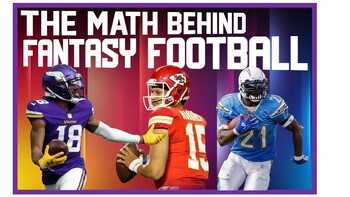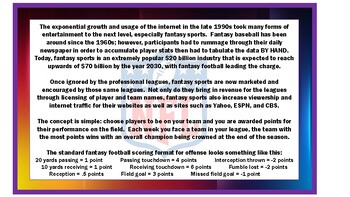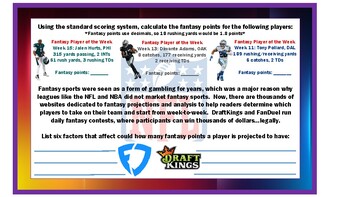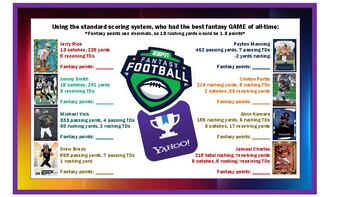Math through Sports - Fantasy Football
- PDF
Description
This is a great filler activity for teachers looking for some real-world application and works for all ages. Students will explore the world of fantasy football, a multi-billion dollar industry that relies entirely on mathematic calculations, conversions, and projections.
In this activity, students will use their knowledge of decimals, negatives, and conversions in order to calculate real-world statistics into fantasy football relevance. Both current and historical games/seasons are used, keeping students engaged in multiple activities. Students are provided with plenty of information, while also being asked to use their research skills.
The final slide can be used in various ways, as a one-time activity or an all-out, season-long fantasy league.





